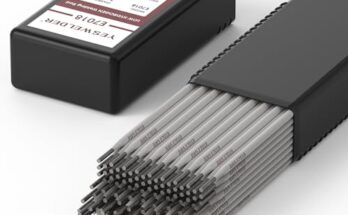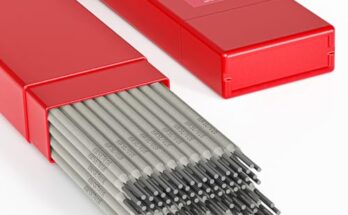When I first got into welding, I was amazed at how much equipment there is to choose from. From the different types of welding processes to the various gases used, the choices can be overwhelming.
One of the most important elements in traditional welding is the shielding gas. It protects the weld from contaminants in the air and helps ensure a strong, clean weld. But what if you want to weld without using shielding gas? Is that even possible?

Image by virtualfair.sarsef.org
The good news is that welding without shielding gas is not only possible but also practical for many applications. In fact, there are welding techniques specifically designed for this purpose.
These methods, such as Flux Core Arc Welding (FCAW) and Stick Welding (SMAW), allow you to weld in environments where shielding gas might not be practical or available. Let’s explore these processes, how they work, and what makes them a great choice for certain welding projects.
Shielding Gas and Its Importance
Before diving into welding without shielding gas, let’s take a moment to understand why shielding gas is typically used in welding. Shielding gas, like Argon, Helium, or CO2, serves several key purposes during welding:
Protecting the Weld from Contaminants: When metals are heated during welding, they become highly reactive. The shielding gas helps protect the molten weld pool from reacting with oxygen and nitrogen in the air, preventing defects like porosity and oxidation.
Improving Arc Stability: Shielding gas also helps stabilize the welding arc, leading to more controlled and cleaner welds.
Ensuring Quality: It ensures that the weld is strong, durable, and free of contaminants that could weaken it over time.
That said, while shielding gas is essential for many types of welding, it is not strictly necessary for all. Some welding techniques are designed to perform well even in the absence of shielding gas, offering distinct advantages in specific situations.
Welding Without Shielding Gas: Is It Possible?
Welding without shielding gas is absolutely possible, and in fact, it’s a practical solution for many situations. While some types of welding (like MIG welding) rely heavily on shielding gases, other methods like Flux Core Arc Welding (FCAW) and Stick Welding (SMAW) don’t require external shielding gas.
Let’s take a look at two of the most popular welding methods that don’t require shielding gas:
- Stick Welding (SMAW)
- Flux Core Arc Welding (FCAW)
Both methods have their own set of advantages and considerations. In the next sections, we will explore each method in detail, along with how they operate without the need for shielding gas.
Stick Welding (SMAW): A Reliable Choice for Welding Without Gas
Stick welding, or Shielded Metal Arc Welding (SMAW), is one of the most widely used methods of welding, particularly for projects that don’t require shielding gas. It is simple, effective, and highly versatile. Stick welding uses an electrode coated with flux, which provides the shielding necessary to protect the weld from contamination. This eliminates the need for external shielding gases.
How Stick Welding Works Without Shielding Gas
The process of stick welding involves the following:
Electrode: The welder uses a stick electrode, which consists of a metal core covered with flux. As the electrode burns during the welding process, the flux coating melts and creates a protective shield around the weld area.
Arc: An electric arc is struck between the electrode and the workpiece. This arc generates intense heat, which melts the metal and creates the weld.
Flux Protection: As the flux burns, it produces a gas shield that prevents the weld from being exposed to atmospheric contaminants like oxygen and nitrogen. This process ensures a clean, strong weld, even without the need for external shielding gas.
Advantages of Stick Welding Without Shielding Gas
- Portability: Stick welding is extremely portable since there’s no need to carry bulky gas tanks.
- Outdoor Use: Stick welding works well in outdoor conditions, including windy environments where shielding gas could be blown away.
- Cost-Effective: Stick welding is often more cost-effective compared to methods that require shielding gas, such as MIG welding.
- Versatility: Stick welding can be used on a variety of materials, including mild steel, stainless steel, and even cast iron.
Applications of Stick Welding Without Shielding Gas
Stick welding is commonly used in construction, shipbuilding, repair work, and pipe welding. It’s also the go-to choice for many DIY welders and hobbyists because of its affordability and ease of use.
Flux Core Arc Welding (FCAW): Another Gasless Welding Option
Another popular method for welding without shielding gas is Flux Core Arc Welding (FCAW). FCAW is similar to MIG welding, but instead of using a solid wire electrode, it uses a hollow wire filled with flux. This flux core produces its own shielding gas as it burns, meaning there’s no need for an external gas supply.
How Flux Core Arc Welding Works Without Shielding Gas
FCAW operates by feeding a flux-cored wire through a welding gun. When the wire is heated by the electric arc, the flux inside the wire burns and produces a protective gas shield around the weld area. This process ensures that the weld is protected from atmospheric contamination, just like traditional MIG welding with shielding gas.
Advantages of Flux Core Welding Without Shielding Gas
Increased Penetration: FCAW typically offers better penetration compared to MIG welding, making it ideal for thicker materials.
No Need for Gas: The flux core itself provides the shielding needed for the weld, so you don’t have to worry about running out of gas.
Faster Welding: Flux core welding tends to be faster than MIG welding because it allows for higher deposition rates.
Outdoor Welding: FCAW works well in outdoor conditions where wind can disrupt traditional shielding gas, making it perfect for job sites or projects in open spaces.
Applications of Flux Core Welding Without Shielding Gas
FCAW is widely used in the construction industry, particularly for heavy-duty applications like structural welding, shipbuilding, and pipeline work. It’s also a great choice for welding thicker materials, where MIG welding might struggle.
Pros and Cons of Welding Without Shielding Gas
While welding without shielding gas can be advantageous in many situations, there are both pros and cons to consider before choosing this method for your next project.
Pros of Welding Without Shielding Gas
Portability: Without the need for a shielding gas tank, you can move around more freely and weld in locations where gas supply is not available.
Cost Savings: Eliminating the cost of shielding gas can save money on projects, especially for small-scale or hobbyist welders.
Outdoor and Windy Conditions: Welding without shielding gas is much more reliable in outdoor conditions, where wind can easily blow away gas shielding.
Easy Setup: Setting up for stick or flux core welding is much quicker and easier since you don’t have to worry about gas lines or connections.
Cons of Welding Without Shielding Gas
Potential for Spatter: Stick welding and flux core welding can create more spatter compared to MIG welding with shielding gas. This means more cleanup and sometimes a rougher finish.
Limited Control: The lack of an external gas shield can sometimes make it harder to control the weld, especially when working on thin materials.
Less Clean Welds: Without shielding gas, the welds may contain more impurities, requiring additional cleaning and preparation.
Skill Level: Welding without shielding gas, particularly with stick welding, may require a higher skill level. Beginners may find it more difficult to get clean, consistent welds.
Which Welding Method Is Best for You?
Choosing the right welding method ultimately depends on your specific project needs. Here’s a quick comparison of the two most common gasless welding options:
| Feature | Stick Welding (SMAW) | Flux Core Arc Welding (FCAW) |
|---|---|---|
| Shielding Gas | No (uses flux coating) | No (flux core provides shielding) |
| Portability | Highly portable | Portable, but requires a larger machine |
| Outdoor Use | Great for windy environments | Excellent for outdoor use, even in wind |
| Welding Speed | Moderate | Faster than stick welding |
| Weld Cleanliness | Moderate, may need cleanup | Can have more spatter but better penetration |
| Material Thickness | Good for thinner materials | Ideal for thicker materials |
| Skill Level | Moderate to advanced | Easy to moderate, but can be tricky for thin metals |
Conclusion
Welding without shielding gas is not only possible but highly practical in certain situations. Methods like Stick Welding (SMAW) and Flux Core Arc Welding (FCAW) offer an excellent solution for those who need to weld in outdoor environments or on thicker materials without worrying about gas tanks or running out of shielding gas.
Both of these methods have their own advantages and disadvantages, so it’s essential to choose the one that best fits your project. Stick welding is more portable and versatile, while flux core welding offers faster speeds and deeper penetration for heavier jobs.
Welding without shielding gas can be a game-changer for many welders, especially when you’re working in less-than-ideal conditions or need a cost-effective solution. Understanding the strengths and limitations of these techniques will help you achieve high-quality, durable welds without the hassle of shielding gas.
FAQs
Is it possible to MIG weld without gas?
Yes, you can MIG weld without gas by using flux core wire. The flux core wire creates its own shielding gas as it burns, eliminating the need for external shielding gas.
What is the difference between flux core and stick welding?
Both flux core and stick welding don’t require shielding gas, but flux core uses a flux-cored wire that provides shielding while stick welding uses a coated electrode. Flux core welding is generally faster, while stick welding is more versatile.
Can I use stick welding outdoors?
Yes, stick welding is ideal for outdoor use, especially in windy conditions where shielding gas might be blown away.
Which method is better for beginners: stick welding or flux core welding?
Flux core welding is generally easier for beginners because it requires less skill to get started, whereas stick welding may require more practice for clean, consistent welds.
Does welding without shielding gas result in weaker welds?
Welding without shielding gas can sometimes result in welds with more spatter and impurities, but if done correctly, the welds can still be strong and durable.


